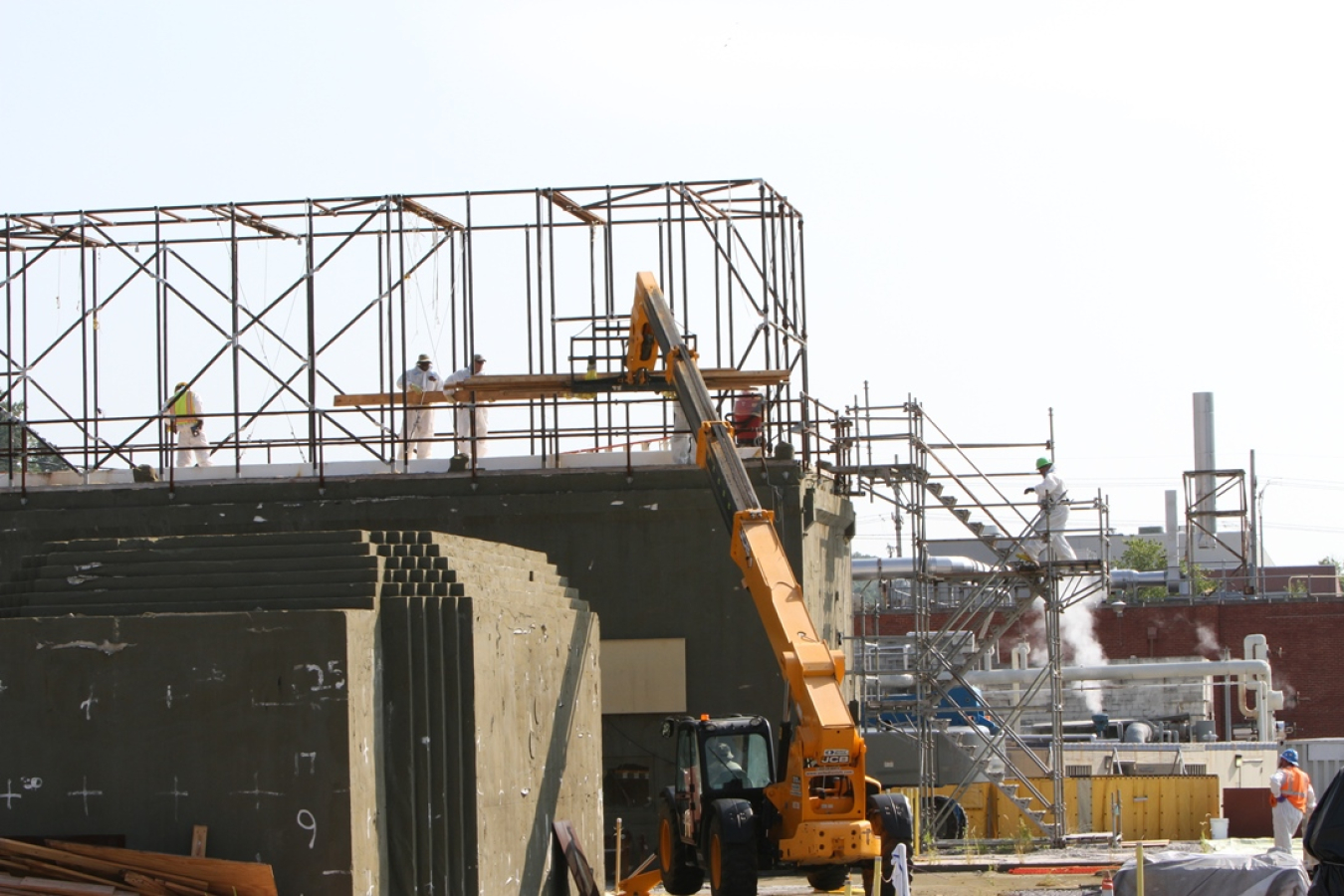In 2016, OREM reached new heights by completing projects no one else in the world has ever achieved, and initiating a new phase of cleanup that enhances safety and lays the groundwork for modernization at the Y-12 National Security Complex and Oak Ridg...
Oak Ridge Office of Environmental Management
January 13, 2017
OREM is conducting important risk reduction and stabilization activities inside old, contaminated buildings located at Y-12 and ORNL. (Above) Workers are performing activities at ORNL's Building 3026 to eliminate contamination pathways until it can be demolished.
The following was an op-ed by OREM Acting Manager Jay Mullis that was featured in the Oak Ridger.
To borrow a recent Oak Ridger headline quoting Oak Ridge Mayor Warren Gooch, “By any standard, excitement and momentum are building in Oak Ridge.” These words aren’t only fitting for the City of Oak Ridge and the growing number of exciting things happening here. We, too, at the Department of Energy’s Oak Ridge Office of Environmental Management could not think of a more fitting headline to describe the successes we achieved during 2016.
This year, we reached new heights by completing projects no one else in the world has ever achieved, and we’ve initiated a new phase of cleanup that enhances safety and lays the groundwork for modernization at the Y-12 National Security Complex (Y-12) and Oak Ridge National Laboratory (ORNL).
In August, our team of federal, contractor, and labor workers successfully completed a decade-long effort to remove all five former uranium enrichment buildings from the East Tennessee Technology Park (ETTP). This significant accomplishment removed a footprint of 4.5 million square feet, and its completion marked the first time this has been successfully achieved anywhere in the world. The size and scope were breathtaking. Workers removed more than 137 miles of piping and 55,000 truckloads of debris, and their work makes nearly 50 acres of land available for commemorating the historical significance of the site, as well as 300 acres for future development.
With the removal of the largest buildings at ETTP, we are now intently focused on our next big goal, which we refer to at Vision 2020 - completing cleanup and transfer of the ETTP site to the private sector for industrial development by 2020.
Our Reindustrialization program, which celebrated its 20 anniversary earlier this month, is already making great progress toward this goal. We have completed important transfers of roadways, electrical and water systems, fire response, and almost 1,000 acres of clean land. These transfers have allowed us to avoid $110 million in costs. Additionally, 20 private companies have already located at the site, and we believe the stage is set for many more to follow in the near future.
While the ETTP site is in the midst of a visible transformation, we are also conducting important risk reduction and facility stabilization activities inside old, contaminated buildings located at Y-12 and ORNL. This work is part of a program we refer to as the Excess Contaminated Facilities initiative. The congressionally-appropriated funding for this work allows us to begin characterizing and stabilizing facilities that are not scheduled for near-term demolition. This effort ultimately results in significantly lowering cleanup costs, preventing the spread of contamination, and helping create safer environments for workers at the sites.
These risk reduction and stabilization projects not only provide an immediate benefit by making buildings safer and more stable, they also give us a jump-start on cleanup as we prepare to make a seamless transition to large-scale cleanup at the Y-12 site sometime in the early to mid-2020s.
To properly prepare for this transition, we must complete construction of two new facilities – a robust mercury treatment facility and additional onsite disposal capacity. We are in the advanced design stages for the mercury treatment facility, and we expect to begin construction late in 2017. The facility opens the door for major demolition by providing a mechanism to control potential mercury releases, and it also aids us in working toward achieving regulatory release limits. Additionally, we are advancing discussions with our state and federal environmental regulators for a new onsite disposal facility. That facility will provide the capacity we need to dispose of debris from cleanup at Y-12 and ORNL, and it allows us to spend a majority of our budget on cleanup rather than waste shipments to other less reliable locations.
Finally, I cannot talk about this year’s achievements without recognizing the partnerships that made them all possible. We are the beneficiaries of living and working in a community that values the work that we do every day. Our work and progress would not be possible without the unwavering support we receive from our Congressional delegation, our host city and counties, the contractor community, labor unions, advocates, stakeholders, and the citizens of this great region. We want to express our deep appreciation for your engagement and the incredible amount of support and advocacy you extend to our work.
Together, we can continue to advance and strengthen this special community.

